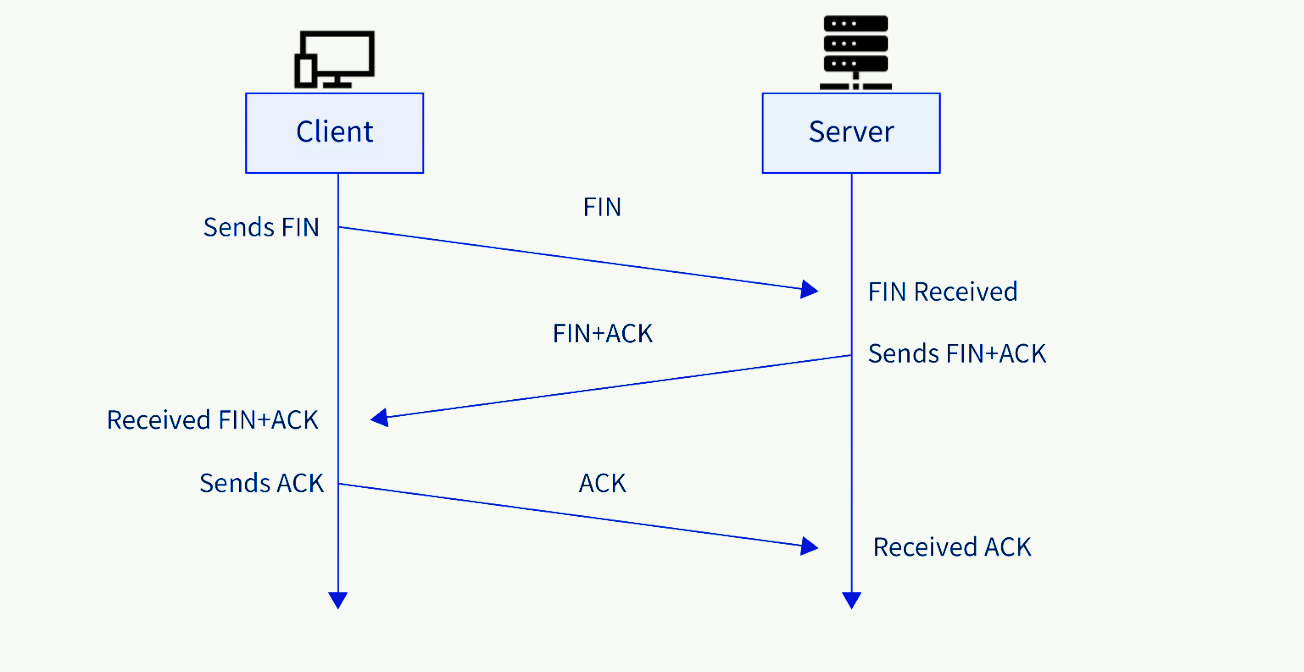TCP 3-Way Handshake
 Nehal Adil
Nehal Adil
Have you ever wondered how two devices start communicating over the Internet and share information? How do they know that their information is going where it was intended? If you know about TCP/IP you would know about the protocols devices follow for sending data, now we will see how they set up this connection.
Imagine you're at a fancy cocktail party 🥂. You see someone you'd like to converse with, but before diving into a conversation about the latest in AI or whether pineapple belongs on pizza, you start with a polite "Hello." They respond with a "Hello" of their own, and only then do you proceed with the chit-chat. This exchange ensures both parties are ready to engage.
Similarly, when two devices want to establish a connection over the internet, they use a process called a TCP handshake.
What is a TCP 3-Way Handshake
What It Is and Why It’s Important?
The TCP 3-Way Handshake is a fundamental process used in the Transmission Control Protocol (TCP) to establish a reliable connection between a client and a server before data transmission begins. This handshake ensures that both parties are synchronized and ready for communication.
Reliability: The 3-way handshake ensures that both the client and server are ready to communicate, reducing the chances of lost or duplicated data packets.
Synchronization: It synchronizes the sequence numbers between the client and server, allowing for proper data tracking and reassembly.
Flow Control: By establishing initial sequence numbers, the handshake sets up the groundwork for TCP flow control and congestion control mechanisms.
Security: It prevents connection spoofing by verifying that both parties are genuine participants in the communication.

The TCP 3-way handshake is crucial for establishing a reliable and synchronized connection, which is essential for the accurate and efficient transfer of data over the internet.
If the handshake is not established, you must verify each time data is sent to ensure it is being transmitted to the intended devices. This adds complexity and reduces the efficiency of data transmission.
TCP 3-way Handshake Process
Steps of a 3-Way Handshake for Establishing the Connection
SYN (Synchronize): The client initiates the connection by sending a SYN packet to the server. This packet contains an initial sequence number (ISN) chosen by the client, which will be used to track the data being sent.
SYN-ACK (Synchronize-Acknowledge): The server responds to the client's SYN packet with a SYN-ACK packet. The SYN-ACK packet includes the server's own initial sequence number (chosen by the server) and an acknowledgment number (client's ISN + 1), indicating that the server has received the client's SYN packet.
ACK (Acknowledge): The client responds to the server's SYN-ACK packet with an ACK packet. The ACK packet contains the server's ISN + 1, confirming the receipt of the server's SYN-ACK packet. At this point, both parties have acknowledged each other's sequence numbers, and the connection is established.

Steps of a 3-Way Handshake for Terminating the Connection
FIN (Finish): The party (client or server) that wants to close the connection sends a FIN packet to the other party, indicating that it has finished sending data.
ACK (Acknowledge): The receiving party acknowledges the FIN packet by sending an ACK packet back, confirming that it has received the FIN request. At this point, the connection is closed in one direction, meaning that the sender of the FIN will no longer send data, but can still receive data from the other party.
FIN (Finish): The receiving party, which has acknowledged the FIN packet, now sends its own FIN packet to indicate that it has also finished sending data.
ACK (Acknowledge): Finally, the original sender of the first FIN packet sends an ACK packet to acknowledge the receipt of the second FIN packet, completing the termination process.
The TCP connection termination process is crucial for gracefully ending a connection and ensuring that all data is properly transmitted and acknowledged before the connection is closed.

Reliable Connections in TCP: How Sequence Numbers and ACKs Work
Now, let's say Alex and Jamie are playing a game where they take turns saying numbers in sequence: Alex says "One," Jamie replies "Two," and so on. What happens if a mischievous squirrel runs by and distracts Jamie, causing him to miss a number? Thankfully, Alex is using a notepad to keep track of every number spoken. If Jamie misses one, Alex can repeat it, making sure Jamie's list is complete.
In the realm of TCP, this is akin to using sequence numbers and ACKs (Acknowledgments). Each packet of data sent over a TCP connection has a sequence number. When the receiving device (like Jamie) acknowledges receipt, it includes the next expected sequence number in its ACK. If something goes awry and a packet gets lost or arrives out of order, the sender (like Alex) can retransmit the missing pieces, ensuring that the conversation stays coherent and complete.
Sequence Numbers:-
Sequence numbers are used to uniquely identify each byte of data in a TCP connection. They help both the sender and receiver keep track of the data being transmitted.
Each side of the connection (client and server) chooses an initial sequence number (ISN) during the TCP 3-way handshake. These ISNs are used as the starting points for tracking the data.
As data is sent, each byte is assigned a sequence number. For example, if the ISN is 1000 and 500 bytes of data are sent, the sequence numbers will range from 1000 to 1499.
Acknowledgments (ACKs):-
ACKs are used to confirm the receipt of data. They help the sender know which data has been successfully received by the receiver and allow for proper flow control.
When the receiver successfully receives a packet, it sends an ACK packet back to the sender. The ACK packet contains an acknowledgment number, which is the sequence number of the next expected byte. For example, if the receiver has received up to sequence number 1499, it will send an ACK with acknowledgment number 1500.
TCP uses cumulative acknowledgment, meaning that an ACK number indicates that all bytes up to that number have been received successfully.
Conclusion
The TCP 3-Way Handshake is a key process in establishing a reliable connection between devices over the Internet. It ensures synchronization, reliability, flow control, and security by using sequence numbers and acknowledgments (ACKs) to manage data transmission accurately. The TCP handshake process is crucial for both establishing and gracefully terminating connections, maintaining the integrity and efficiency of data communication.
Sequence numbers and ACKs are fundamental components of TCP that enable reliable, efficient, and error-free data transmission over the Internet. They play a crucial role in maintaining the integrity of the communication and ensuring that all data is delivered accurately.
Subscribe to my newsletter
Read articles from Nehal Adil directly inside your inbox. Subscribe to the newsletter, and don't miss out.
Written by
